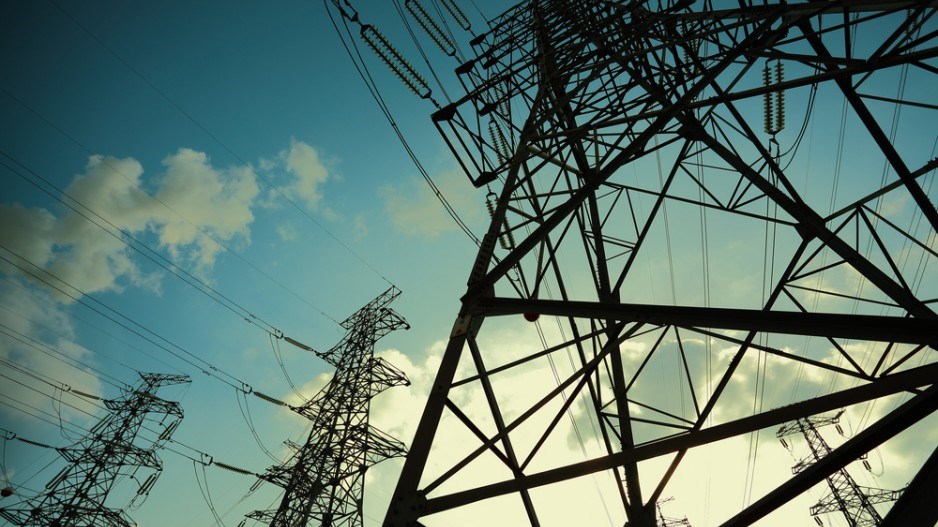B.C. will offer incentives for natural gas producers’ to move onto the electricity grid and lean on the Trudeau government to fund new transmission lines as part of an aggressive plan to electrify its emissions-heavy oil and gas fields.
In an interview Nov. 29, Energy Minister Bill Bennett laid out the government’s new plan to slash oil and gas sector emissions—an effort that would lead to a boom in transmission line construction in Northeast B.C. and have implications for independent power producers, the province’s liquified natural gas industry and the Site C dam.
Electrifying B.C.’s gas fields would require buy-in from industry as well as help from the federal government—challenges Bennett compared to a Rubik’s Cube.
“There’s a reason the federal government and the provincial government are so enthusiastic about trying to solve that Rubik’s Cube,” he said. “It’s because there’s a lot to be gained here in terms of emissions reductions.”
The minister is not seeking reelection in May 2017, making the electrification strategy one of his last major energy policy decisions.
Under the new policy, BC Hydro will offer incentives for oil and gas producers to connect to the low-emission electricity grid, instead of burning their own gas to power hydraulic fracturing and processing operations. They would continue to pay regular BC Hydro rates.
Bennett said the province is also in discussions with the federal government over funding for transmission lines to reach remote northeast oilfields.
“We don’t know the results of that discussion yet, but we’re cautiously optimistic that we’ll get some help from the federal government to build additional transmission lines that will help open up this program to other companies,” Bennett said.
The oil and gas industry produces around 18 per cent of B.C.’s greenhouse gas emissions, according to the province’s Climate Leadership Plan released this August. In addition to reducing carbon dioxide emissions through electrificatioin, the province aims to slash the sector’s methane emissions by around 45 per cent.
The push to electrify B.C.’s gas industry began with the Dawson Creek and Chetwynd Area Transmission Line (DCAT), which plugged South Peace natural gas producers into the W.A.C. Bennett dam in 2015.
While a ramp up in oil and gas production has driven a spike in electricity demand, the DCAT line reaches only a handful of producers. Notably absent is Progress Energy, which owns holdings north of Fort St. John that would ship gas to the Pacific NorthWest LNG project
BC Hydro is looking at building two or more additional lines to reach into those remote areas, Bennett said, potentially with help from Ottawa, which also hopes to cut emissions from the oil and gas sector.
The greenhouse gas emissions reductions would be significant. Existing oil and gas electrification has cut around 1.6 million tonnes of greenhouse gas emissions a year, while electrifying the remaining oil and gas operations in the Montney shale would avoid an annual four million tonnes, Bennett said.
It would also address another problem facing BC Hydro: low electricity demand.
“We’re trying to drive demand for electricity, because we have excess clean electricity and obviously we’d like to sell it in the province in ways that contribute to our economy and help create jobs,” the minister said.
While existing demand is slack, Bennett expects new LNG projects and oil and gas electrification will drive demand for electricity by the time Site C is expected to come online in 2024.
“Even with Site C, we will not have enough generation in the province,” he said. “We’re pretty optimistic our economy is going to continue to grow. So while we have a shortage right now that we’d like to (fill), we also know we’re going to have to build new generation.”
That could lure back independent power producers who fled the province after the approval of Site C. Many producers, including the Canadian Wind Energy Association, said it was unlikely any new wind, solar, run-of-river or geothermal projects would go forward following the Site C decision, predicting a glut of electricity on the market.
The plan will likely encounter pushback from critics who see it as additional subsidy for the oil and gas industry. Earlier this year, B.C. NDP critic Adrian Dix criticized the B.C. Liberal’s gas electrification plan as “chasing customers” for Site C, which opponents say isn’t needed to meet demand. Others say the government’s new electricity rates for LNG terminals amount to tens of millions of dollars in subsidies.
Bennett said that while there would be upfront costs, electrifying gas fields would pay for itself over time.
“I’ve always wanted to have electricity available for the natural gas industry, but I’ve never believed we can or should do that on the backs of provincial ratepayers,” he said.




